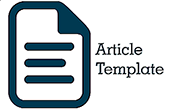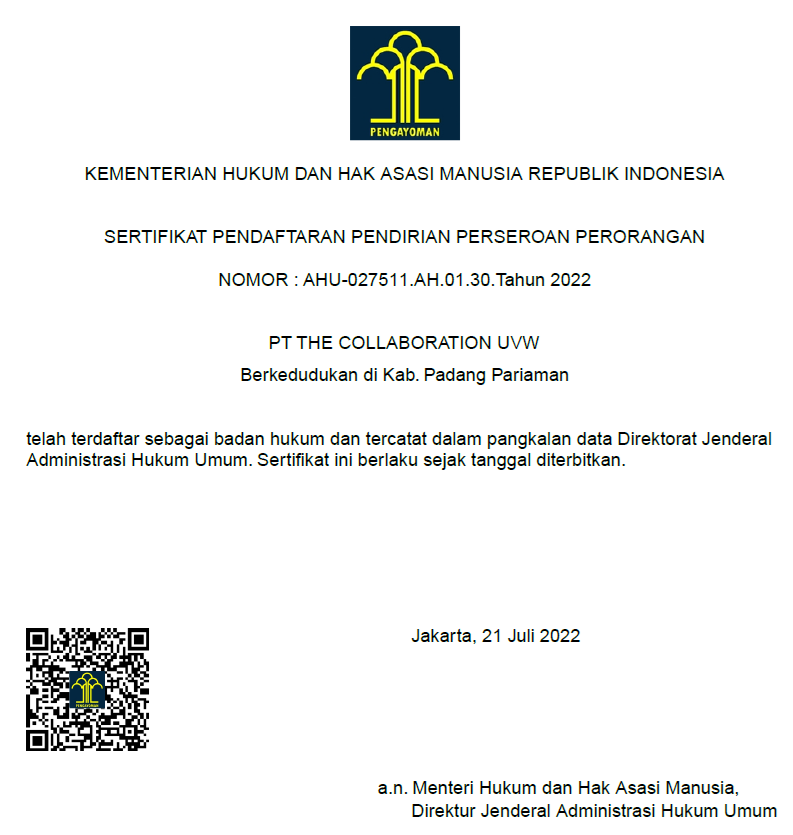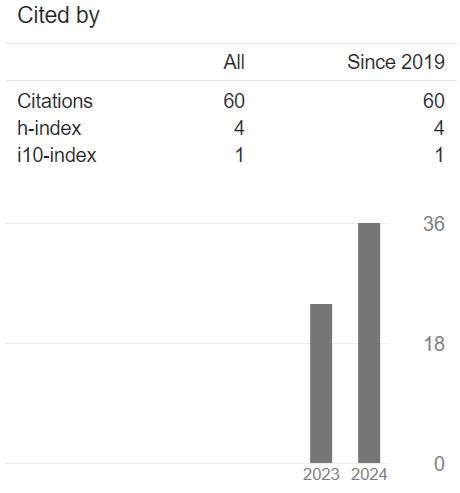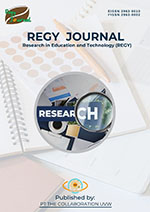The needs for media development of Porlite (literacy portal) via Google Sites to increase the student’s reading interest
DOI:
https://doi.org/10.62590/regy.v3i1.102Keywords:
Porlite, Google Sites, literacy portal, interest in reading, media literacyAbstract
This research aimed to analyze the needs for media development of a portal media (literacy portal) via the Google Site to increase student’s interest in reading. The portal media is called Porlite. Porlite can be used to increase the ability to use digital technology in the world of education, especially during the implementation of school literacy movements. This portal media via the Google site can also increase student’s interest in reading and literacy skills. This type of research was quantitative-descriptive. The research subjects were students of SMAN 1 Pulau Punjung. This research took a sample of 73 students from 286 populations in phase E. The research results showed that student’s interest in Porlite was 80%, while the needs for students to use Porlite as a literacy medium was 70%, and the relationship between Porlite and interest in reading was 72%. Porlite with Google Sites can be used in literacy activities to increase student’s interest in reading.
References
Akmal, S., Dhivah, I., & Mulia, M. (2020). Investigating students’ interest on reading journal articles: Materials, reasons and strategies. Studies in English Language and Education, 7(1), 194-208. https://doi.org/10.24815/siele.v7i1.15358.
Altamura, L., Vargas, C., & Salmerón, L. (2023). Do new forms of reading pay off? A meta-analysis on the relationship between leisure digital reading habits and text comprehension. Review of Educational Research, 2023(December). https://doi.org/10.3102/00346543231216463.
Amaliah, E., Dermawan, O., Kusuma Yusuf, T., & Novianti. (2024). Implementation of library management in increasing interest in reading at the University of Lampung. KnE Social Sciences, 9(12), 292-301. https://doi.org/10.18502/kss.v9i12.15861.
Anugerahwati, M. (2019). Integrating the 6Cs of the 21st century education into the English lesson and the school literacy movement in secondary schools. KnE Social Sciences, 3(10), 165-171. https://doi.org/10.18502/kss.v3i10.3898.
Arpan, M., Sulistiyarini, D., & Santoso, D. (2016). Effect of motivation and creativity on students’ psychomotor ability. Journal of Education, Teaching and Learning, 1(2), 71-75. http://dx.doi.org/10.26737/jetl.v1i2.42.
Baker, D. L., Ma, H., & Gallegos, E. (2019). Increasing parental knowledge through workshops on early childhood programs, home literacy, and technology use. Bilingual Research Journal, 42(4), 491-509. https://doi.org/10.1080/15235882.2019.1666755.
Barratt, J., Dudley, D., Stylianou, M., & Cairney, J. (2024). A conceptual model of an effective early childhood physical literacy pedagogue. Journal of Early Childhood Research, 22(3), 381-394. https://doi.org/10.1177/1476718X231219580.
Batubara, Q. N. M. (2023). ICT-based needs analysis of learning arts and culture in middle school at Sunggal. Research in Education and Technology (REGY), 2(1), 38-41. https://doi.org/10.62590/regy.v2i1.96.
Budiman, R. D. A., Liwayanti, U., & Arpan, M. (2022). Analisis kebutuhan dan kesiapan penerapan media pembelajaran berbasis Android materi Ilmu Akidah. EDUMATIC: Jurnal Pendidikan Informatika, 6(1), 31-38. https://doi.org/10.29408/edumatic.v6i1.5087.
Cary, S. G., Pritchard, M. E., & Landrum, R. E. (2024). Psychology workforce literacy: A Gap worth minding. Psychology Learning & Teaching, 23(2), 136-150. https://doi.org/10.1177/14757257241248649.
DePauw, P., Cauberghe, V., & Hudders, L. (2019). Taking children’s advertising literacy to a higher level: A multilevel analysis exploring the influence of parents, peers, and teachers. Communication Research, 46(8), 1197-1221. https://doi.org/10.1177/0093650218797876.
Elgort, I., Brysbaert, M., Stevens, M., & Van Assche, E. (2018). Contextual word learning during reading in a second language: An eye-movement study. Studies in Second Language Acquisition, 40(2), 341-366. https://doi.org/10.1017/S0272263117000109.
Faisal, A. (2023). Evaluasi pembelajaran di pondok pesantren. Research in Education and Technology (REGY), 1(2), 103-106. https://doi.org/10.62590/regy.v1i2.26.
Fathoni, A., Sudira, P., Dharmayanti, W., & Arpan, M. (2017). Pengaruh wawasan kevokasionalan, lingkungan belajar, sosial ekonomi, dan potensi siswa SMP terhadap minat melanjutkan ke SMK. Edukasi: Jurnal Pendidikan, 15(2), 196-214.
Feladi, V., Arpan, M., & Verawardina, U. (2017). Pelatihan pembuatan media pembelajaran berbasis animasi di SMP Negeri 2 Siantan Kabupaten Mempawah. Gervasi: Jurnal Pengabdian kepada Masyarakat, 1(1), 32-42.
Firdaus, A. M. (2021). Implementation of the school literacy movement during the Covid-19 pandemic at elementary schools. Pedagogik Journal of Islamic Elementary School, 4(1), 91-102. https://doi.org/10.24256/pijies.v3i2.3044.
Firnas, A., Munas, & Rizvi, M. (2021). Reading habit and its affect on academic performance of the students of Advanced Technological Institute, Sammanthurai. International Journal of Multidisciplinary: Applied Business and Education Research, 2(10), 934-942. https://doi.org/10.11594/ijmaber.02.10.11.
Flierl, M., & Maybee, C. (2020). Refining information literacy practice: Examining the foundations of information literacy theory. IFLA Journal, 46(2), 124-132. https://doi.org/10.1177/0340035219886615.
Gellel, A. M. (2018). Towards a symbol literacy approach in the education of children. International Journal of Children’s Spirituality, 23(2), 109-121. https://doi.org/10.1080/1364436X.2018.1448761.
Gusnetti, G., Morelent, Y., & Nita, O. (2022). Critical Reading Skills of the Descriptive Genre Through E-Learning. KnE Social Sciences, 7(6), 11-19. https://doi.org/10.18502/kss.v7i6.10604.
Hernando, F., Basri, I. Y., Alwi, E., & Purwanto, W. (2022). Pembuatan video pembelajaran praktikum pada mata pelajaran Listrik Elektronika. Research in Education and Technology (REGY), 1(1), 68-75. https://doi.org/10.62590/regy.v1i1.73.
Hirsh, H. K., Richmond, M. K., Pampel, F. C., Jones, S. S., Molieri, A. C., & Jones, J. (2018). Results from a randomized controlled trial of the motheread/fatheread early literacy intervention: Evidence of impact in a rural community. Early Education and Development, 30(2), 216-237. https://doi.org/10.1080/10409289.2018.1544813.
Kazemier, E., M., Damhof, L., Gulmans, J., & Cremers, P. H. M. (2021). Mastering futures literacy in higher education: An evaluation of learning outcomes and instructional design of a faculty development program. Futures, 132(September), 102814. https://doi.org/10.1016/j.futures.2021.102814.
Kikas, E., Pakarinen, E., Soodla, P., Peets, K., & Lerkkanen, M. K. (2017). Associations between reading skills, interest in reading, and teaching practices in first grade. Scandinavian Journal of Educational Research, 62(6), 832–849. https://doi.org/10.1080/00313831.2017.1307272.
Kurnia, N. I. (2021). The philosophical foundation of the school literacy movement in Indonesia. Jurnal Pendidikan, 22(2), 91-101. https://doi.org/10.33830/jp.v22i2.1891.2021.
Lesmana, C., Arpan, M., Ambiyar, A., Wakhinuddin, W., & Fatmawati, E. (2019). Respons mahasiswa terhadap pelaksanaan program matrikulasi. Edukasi: Jurnal Pendidikan, 17(2), 227-237. http://dx.doi.org/10.31571/edukasi.v17i2.1528.
Liang, Q., de la Torre, J., & Law, N. (2021). Do background characteristics matter in children’s mastery of digital literacy? A cognitive diagnosis model analysis. Computers in Human Behavior, 122(September), 106850. https://doi.org/10.1016/j.chb.2021.106850.
Liu, C.-C., Chen, W.-J., Lo, F., Chang, C.-H., & Lin, H.-M. (2024). Teachable Q&A agent: The effect of Chatbot training by students on reading interest and engagement. Journal of Educational Computing Research, 62(4), 1122-1154. https://doi.org/10.1177/07356331241236467.
Lupo, S. M., Frankel, K. K., Lewis, M. A., & Wilson, A. M. (2024). Literacy intervention in secondary schools exploring educators’ beliefs and practices about supporting adolescents’ literacy learning. Journal of Teacher Education, 75(1), 13-28. https://doi.org/10.1177/00224871231156371.
Mayuni, I., Leiliyanti, E., Agustina, N., & Antoro, B. (2020). The praxis of literacy movement in Indonesian context. KnE Social Sciences, 4(14), 897-909. https://doi.org/10.18502/kss.v4i14.7946.
Mimeau, C., Ricketts, J., & Deacon, S. H. (2018). The role of orthographic and semantic learning in word reading and reading comprehension. Scientific Studies of Reading, 22(5), 384-400. https://doi.org/10.1080/10888438.2018.1464575.
Mushtaq, S., Soroya, S. H., & Mahmood, K. (2021). Reading habits of generation Z students in Pakistan: Is it time to re-examine school library services? Information Development, 37(3), 389-401. https://doi.org/10.1177/0266666920965642.
Nasution, A., Ambiyar, Refdinal, Arpan, M., & Putri, E. (2024). POGIL learning model—metaphorming for mobile-based cryptography creation. International Journal of Interactive Mobile Technologies (iJIM), 18(11), 146-159. https://doi.org/10.3991/ijim.v18i11.49057.
Oktaviani, W., & Sopiah, S. (2020). The effect of school literation movement on students’ reading interest through learning sources. KnE Social Sciences, 4(7), 101-116. https://doi.org/10.18502/kss.v4i7.6846.
Papadopoulou, M., Makri, K., Pagkourelia, E., Kombiadou, E., & Gaspari, K. (2023). Early literacy going digital: Interweaving formal and informal literacy learning through digital media. Journal of Early Childhood Literacy, 2023(August). https://doi.org/10.1177/14687984231189988.
Prabowo, T. T., Marwiyah, Zain, L., Martias, L. D., Riani, N., Farhanah, N., & Sitthiworachart, J. (2024). Effect of demographic factors on reading habits: Study on Indonesian secondary school students. Journal of Librarianship and Information Science, 2024(March). https://doi.org/10.1177/09610006241239078.
Pratiwi, S., Prasetia, I., & Gajah, N. (2022). Literacy culture in elementary schools: The impact of the literacy movement program and library facilities. Jurnal Kependidikan: Jurnal Hasil Penelitian dan Kajian Kepustakaan di Bidang Pendidikan, Pengajaran dan Pembelajaran, 8(3), 786-794. https://doi.org/10.33394/jk.v8i3.5559.
Prawiyogi, A. G., Fitri, A., & Suhardiman, S. (2020). Use of big book media towards interest in reading elementary school students. International Journal of Theory and Application in Elementary and Secondary School Education, 2(1), 8-11. https://doi.org/10.31098/ijtaese.v2i1.164.
Putri, M. C., Azrina, O. R., & Amaliah, E. (2024). Implementation of the School Literacy Movement (GLS) for students of Junior High School (SMP) Al-Azhar 3 Bandar Lampung. KnE Social Sciences, 9(12), 603-626. https://doi.org/10.18502/kss.v9i12.15884.
Qiao, S., Chu, S. K. W., & Yeung, S. S. sze. (2023). Understanding how gamification of English morphological analysis in a blended learning environment influences students’ engagement and reading comprehension. Computer Assisted Language Learning, 2021(June), 1-34. https://doi.org/10.1080/09588221.2023.2230273.
Rahim, F. (2008). Teaching Reading in Primary Schools. Jakarta: Earth of Letters.
Scharrer, E., Durrani, A., Suren, N., Kang, Y., Zhou, Y., & Butterworth, E. (2023). Early adolescents’ views of gender on YouTube in the context of a critical media literacy program. The Communication Review, 26(1), 67-86. https://doi.org/10.1080/10714421.2023.2167911.
Setiyadi, D. B. P. (2018). E-literary texts: Reading materials for school literacy movement. KnE Social Sciences, 3(9), 538-545. https://doi.org/10.18502/kss.v3i9.2716.
Sihaloho, F. A. S., Martono, T., & Daerobi, A. (2019). The implementation of school literacy movement at the senior high school. International Journal of Educational Research Review, 4(1), 88-96. https://doi.org/10.24331/ijere.486907.
Stainthorp, R. (2020). How psychology helps us to understand word reading. Education, 49(1), 29-40. https://doi.org/10.1080/03004279.2020.1824700.
Sugiyono. (2016). Quantitative, qualitative and R&D research methods. Bandung: Alfabeta.
Sulistiyarini, D., Bibi, S., Fatmawati, E., & Arpan, M. (2018). Pelatihan pembuatan media pembelajaran interaktif di SMP dan SMK Mandiri Pontianak. Gervasi: Jurnal Pengabdian kepada Masyarakat, 2(1), 39-46.
Supardi, S., Putra, R. K., Iqbal, M., & Toni, K. (2023). Development of mobile AR applications as a science learning media in increasing junior high school students’ interest in learning. Research in Education and Technology (REGY), 2(1), 1-5. https://doi.org/10.62590/regy.v2i1.93.
Syafitri, N. (2019). The correlation between students’ reading habit and reading comprehension in English as a foreign language. English Education Journal, 5(2), 91-98. https://doi.org/10.55340/e2j.v5i2.277.
Syaifullah, L., Ambiyar, A., Zaus, M. A., & Arpan, M. (2024). Efektivitas pendekatan blended learning berbantuan e-learning terhadap hasil belajar mahasiswa. Juwara Jurnal Wawasan dan Aksara, 4(1), 1-12. https://doi.org/10.58740/juwara.v4i1.73.
Tarigan, H. G. (1985). Reading as a Language Skill. Yogyakarta: Space.
Walipah, E., Rahman, R., Sopandi, W., & Sujana, A. (2020). School literacy movement in the Industrial Revolution Era 4.0 in building speed reading skills. International Conference on Elementary Education, 2(1), 1763-1770.
Wang, L., Lee, H., & Ju, D. Y. (2018). Impact of digital content on young children’s reading interest and concentration for books. Behaviour & Information Technology, 38(1), 1-8. https://doi.org/10.1080/0144929X.2018.1502807.
Wang, Q., Ma, M., Shi, Y., Li, M., & Wang, T. (2023). Modeling the relationships among home literacy environment, reading interest, self-regulation, and reading ability of children with intellectual disabilities in China. International Journal of Developmental Disabilities, 2023(June), 1-10. https://doi.org/10.1080/20473869.2023.2230411.
Widiana, I. W., Triyono, S., Sudirtha, I. G., Adijaya, M. A., & Wulandari, I. G. A. A. M. (2023). Bloom’s revised taxonomy-oriented learning activity to improve reading interest and creative thinking skills. Cogent Education, 10(2). https://doi.org/10.1080/2331186X.2023.2221482.
Wuryandani, W., Fathurrohman, F., & Suparlan, S. (2019). Character education through school literacy program in elementary school. KnE Social Sciences, 3(17), 51-61. https://doi.org/10.18502/kss.v3i17.4622.
Zhao, W., Song, Y., Zhao, Q., & Zhang, R. (2018). The effect of teacher support on primary school students’ reading engagement: the mediating role of reading interest and Chinese academic self-concept. Educational Psychology, 39(2), 236-253. https://doi.org/10.1080/01443410.2018.1497146.
Zur, S., Hestiana, H., & Zulkifli, M. (2022). Students’ Interest in Reading English Texts. KnE Social Sciences, 7(8), 148-157. https://doi.org/10.18502/kss.v7i8.10733.
Downloads
Published
How to Cite
Issue
Section
License
Copyright (c) 2024 Rafniati Rafniati, Nuraeni Dahri

This work is licensed under a Creative Commons Attribution-ShareAlike 4.0 International License.
















